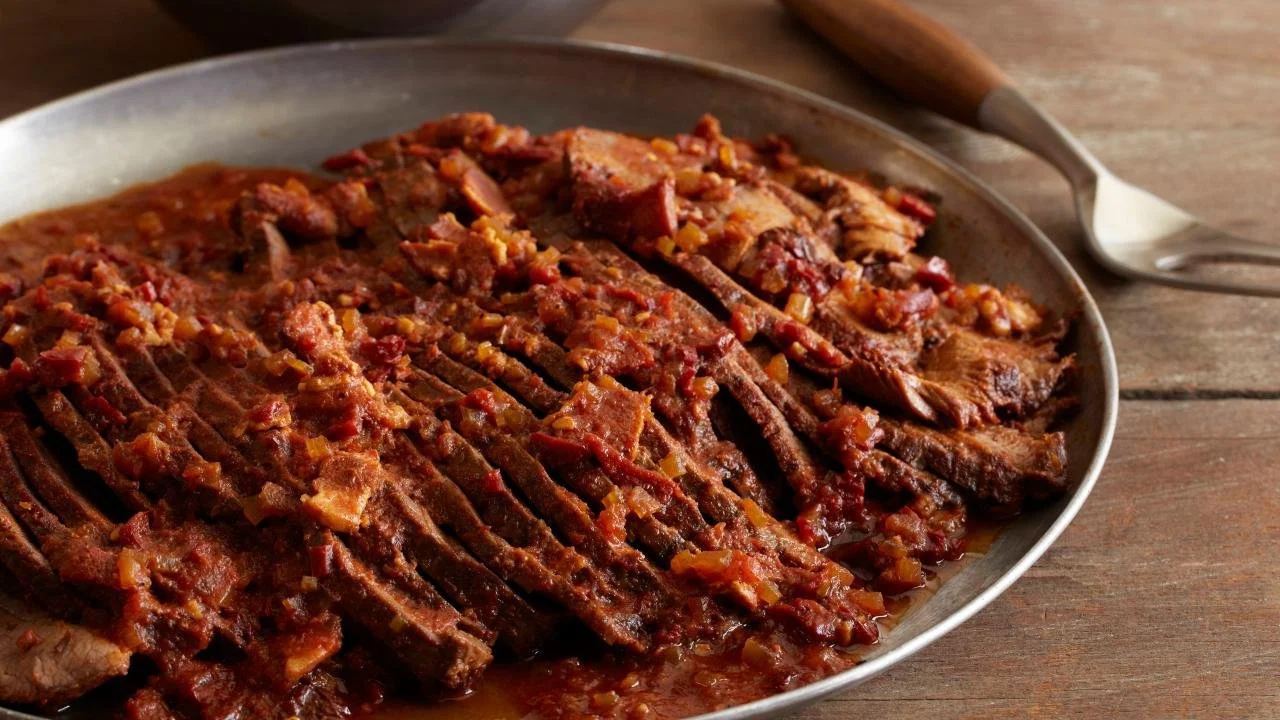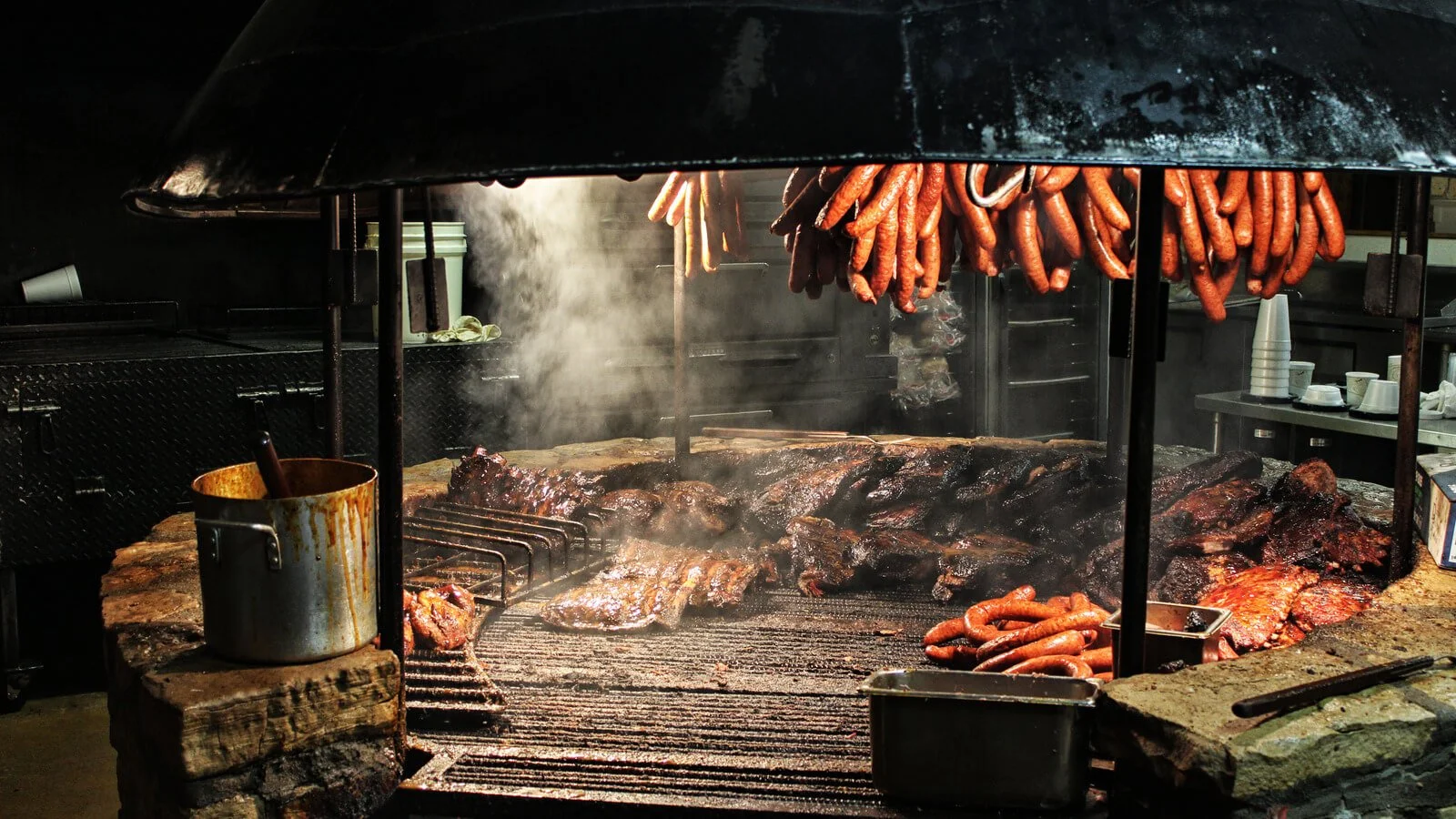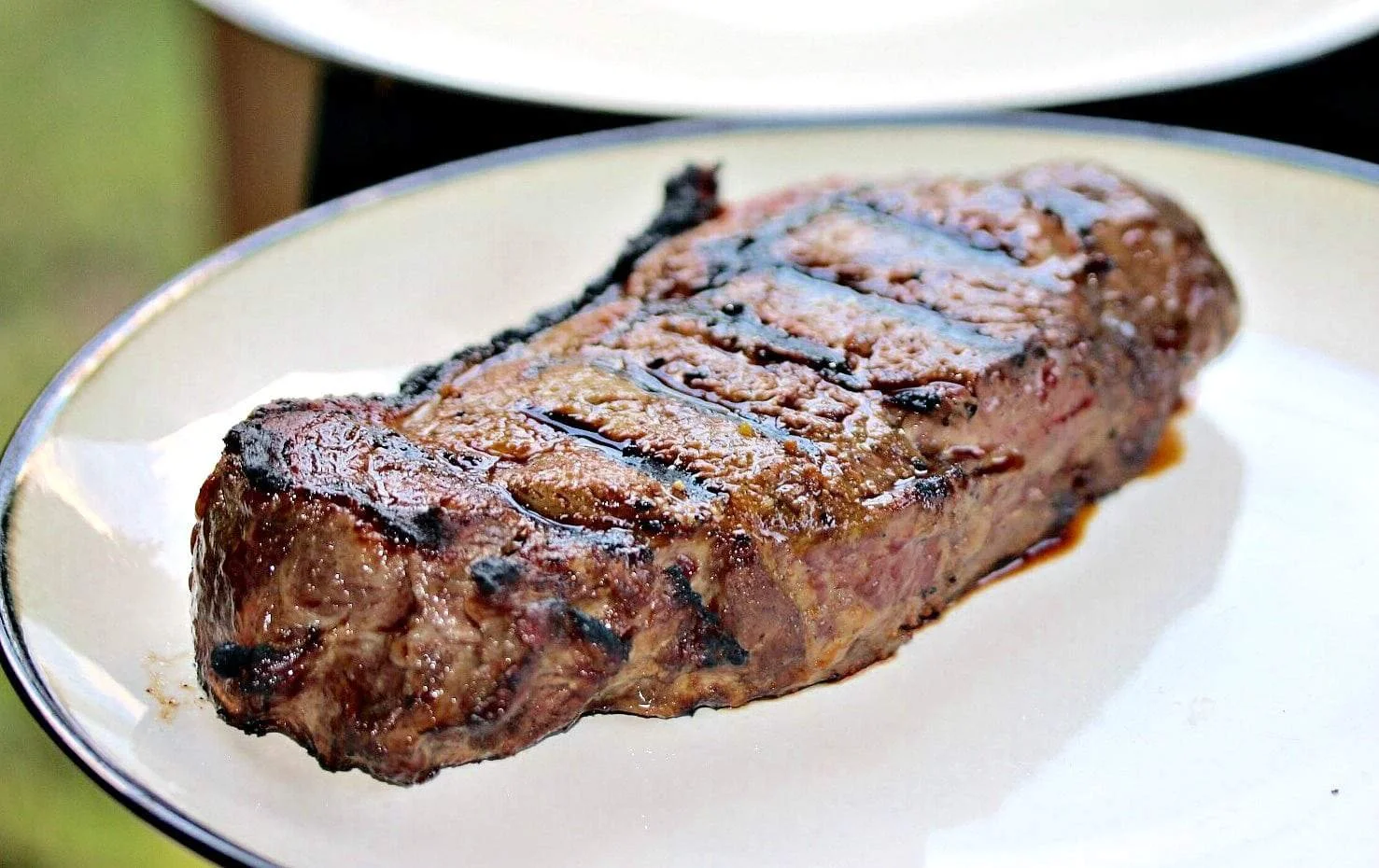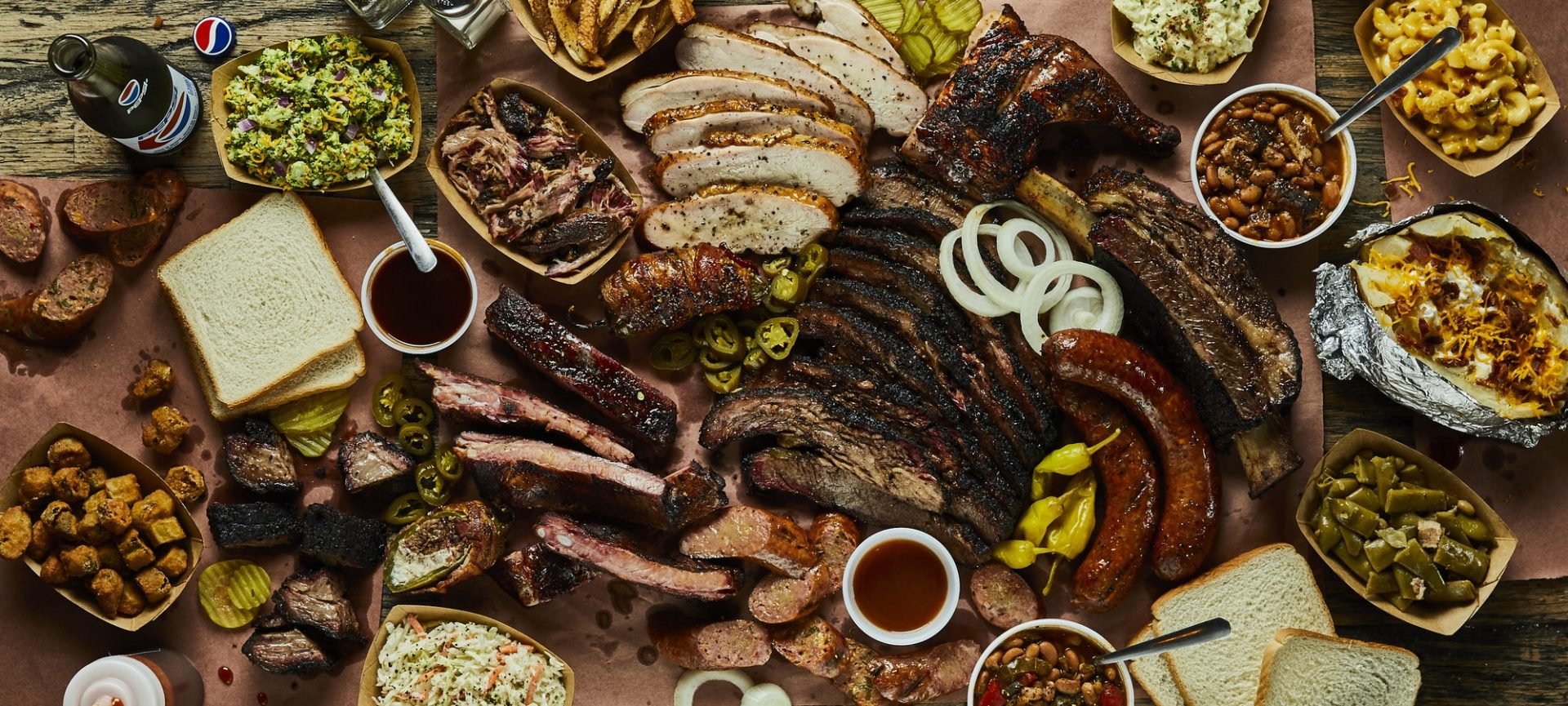Beyond Barbecue: Exploring Texan Secrets for Tender Meats
Discover > Texas Home Cooking > Beyond Barbecue: Exploring Texan Secrets for Tender Meats
Texas is synonymous with barbecue (What wine goes well with barbecue?), but the Lone Star State's culinary traditions go far beyond smoked meats (What wine goes well with smoked meats?). Texan cuisine boasts a rich tapestry of cooking techniques that result in tender, flavorful meats. While barbecue is undoubtedly a highlight, Texans have mastered various other methods to achieve melt-in-your-mouth tenderness.
Let’s delve into the world of Texan cooking techniques that go beyond barbecue, exploring the secrets and methods that make Texan meats so irresistibly tender.
Slow and Low: The Art of Barbecue
Barbecue is the crown jewel of Texan cuisine, and it's no secret that Texans take their smoked meats seriously. Slow-cooking over low heat for extended periods is the essence of Texan barbecue. Pitmasters meticulously control temperature and smoke, using a combination of wood and charcoal to infuse the meat with a distinct flavor profile. Traditional barbecue cuts like brisket, ribs, and sausage benefit from this slow and low approach, resulting in tender, juicy meat that practically falls off the bone.
Types of Wood for Texas Barbecue
Different types of wood commonly used for smoking Texas barbecue include mesquite, oak, and pecan. Each wood imparts its unique flavor profile to the meat, contributing to the overall taste of the barbecue.
Mesquite
Mesquite wood is widely used in Texas barbecue and is known for its strong, bold flavor. It burns hot and fast, making it ideal for shorter cooking times. It complements beef (how long does beef last?) cuts like brisket and ribs, adding a robust smoky flavor.
Oak
Oak is a popular choice for smoking in Texas due to its versatility. It burns at a moderate temperature and produces a milder smoke flavor compared to mesquite. Oak is well-suited for smoking a variety of meats, including beef, pork, and poultry. It imparts a balanced, smoky taste without overpowering the natural flavors of the meat.
Pecan
Pecan wood is favored for its sweet and nutty flavor. It burns slowly and evenly, making it suitable for longer cooking times. Pecan wood is often used to smoke pork and poultry, providing a delicate smokiness that pairs well with their flavors.
Tips for Perfecting Texas Barbecue
Maintaining a consistent temperature throughout the smoking process is crucial to achieving tender, flavorful Texas barbecue. Pitmasters employ various techniques to achieve this:
Fire Management
Pitmasters carefully manage the fire by adding wood or charcoal as needed to maintain a steady temperature. They may create separate fire and smoke chambers in their smokers to control the heat source and ensure consistent airflow.
Ventilation
Proper ventilation is essential to control the temperature and smoke levels. Pitmasters adjust the vents on their smokers to regulate the airflow, which affects the intensity of the fire and the amount of smoke produced.
Monitoring
Pitmasters use thermometers to monitor the temperature inside the smoker. They place the probes strategically to measure the heat at different points, ensuring even cooking. Regular monitoring allows them to make necessary adjustments to maintain the desired temperature.
Ideal smoking times and temperatures can vary depending on the cut of meat and personal preferences. However, here are some general guidelines for popular Texas barbecue cuts:
Brisket: Brisket is the king of Texas barbecue. It requires low and slow cooking at a temperature range of 225°F to 250°F (107°C to 121°C). Smoking a whole brisket can take anywhere from 10 to 16 hours, depending on its size and thickness.
Ribs: Pork ribs (What wine goes well with pork ribs?) and beef ribs are smoked at similar temperatures, typically between 225°F and 250°F (107°C to 121°C). Baby back ribs may take around 4 to 6 hours, while spare ribs and beef ribs can take 5 to 7 hours or more, depending on tenderness preference.
Pork Shoulder (Pulled Pork): Pork shoulder is smoked at a temperature range of 225°F to 250°F (107°C to 121°C). It is slow-cooked for several hours, usually around 10 to 12 hours, until the meat reaches a tender consistency suitable for pulling.
Sausages: Sausages are typically smoked at a slightly higher temperature, around 250°F to 275°F (121°C to 135°C). They cook relatively quickly, usually within 1 to 2 hours, until they reach an internal temperature of 160°F (71°C) for food safety.
It's important to note that these smoking times and temperatures are general guidelines, and pitmasters often rely on their experience and intuition to determine the perfect cooking time for each individual piece of meat.
Braising: A Texan Tradition
Braising has a rich history and significant role in Texas cuisine. It is a cooking method that involves searing meat at high heat and then slowly simmering it in a flavorful liquid at a low temperature over an extended period. This technique is often used for tougher cuts of meat that have a higher amount of connective tissue and collagen.
Commonly Braised Texas Dishes
Several dishes in Texas cuisine commonly utilize braising as a cooking method:
Pot Roasts
Pot roasts are classic comfort food in Texas. Tough cuts of beef, such as chuck roast or bottom round, are seared and then braised with aromatic vegetables and liquid. The slow, gentle cooking of pot roasts helps break down the tough fibers and collagen in the meat, resulting in tender and flavorful roasts.
Beef Stews
Beef stews (What wine goes well with beef stew?) are hearty and beloved dishes in Texas. They typically feature chunks of beef, such as stew meat or chuck, braised with a combination of vegetables, herbs, and spices. The low-temperature, long cooking process allows the flavors to meld together and tenderizes the meat, creating a rich and satisfying stew.
Chili
Chili is a Texan staple and often involves braising meat. Traditional Texas chili is made with chunks of beef, such as chuck or brisket, which are seared and then simmered in a flavorful chili sauce. The slow cooking process allows the meat to absorb the flavors of the chili spices and develop a melt-in-your-mouth texture.
The slow, low-temperature cooking of braising is essential for breaking down the tough fibers and connective tissues in tougher cuts of meat. These cuts contain a significant amount of collagen, a protein that transforms into gelatin when cooked slowly at a low temperature. The gelatin helps lubricate the meat fibers, making them tender and moist.
Liquids Used in Texas Braising
Flavorful liquid ingredients play a crucial role in braising, as they both provide moisture and contribute to the taste of the final dish. Some examples of popular liquids used in Texas braising include:
Beef Broth
Beef broth (how long does beef broth last?) is a common choice for braising as it adds a rich, savory flavor to the meat. It complements the beefy taste of the meat and enhances the overall depth of the dish.
Beer
Beer is often used in braising for its ability to tenderize the meat and add a distinctive flavor. It can range from light lagers to dark stouts, with each type providing its unique taste profile to the dish.
Red Wine
Red wine is another flavorful liquid used in braising. It adds complexity and depth to the dish, infusing it with rich flavors and aromas. The acidity in red wine also helps tenderize the meat.
Aromatic vegetables and spices play a crucial role in enhancing the taste of braised dishes (What wine goes well with braised dishes?). Common aromatic vegetables used in Texas cuisine include onions, garlic, carrots, and celery. These vegetables release their flavors into the braising liquid, adding depth and complexity to the dish.
Spices and herbs, such as bay leaves, thyme, rosemary, and chili powder, are often used to season braised meats (What wine goes well with braised meats?). These ingredients infuse the dish with their distinct flavors, creating a well-rounded and delicious final result.
Overall, braising is a technique deeply rooted in Texas cuisine, transforming tougher cuts of meat into tender and flavorful dishes. The slow, low-temperature cooking process, combined with flavorful liquids, aromatic vegetables, and spices, results in mouthwatering and comforting Texas braised dishes.
Marinating and Tenderizing
Marinating and tenderizing meats are important techniques in Texan cooking to enhance flavor and ensure tender results. Let's delve into the art of marinating and tenderizing, including the science behind it and various methods used:
The Science of Marinades
Marinades are flavorful liquids in which meats are soaked for a period of time before cooking. Marinades typically consist of acidic ingredients, such as vinegar, citrus juices, or yogurt, along with oils, herbs, spices, and aromatics. The acidic components play a key role in tenderizing the meat.
The acidity in marinades helps break down tough fibers and connective tissues in the meat. It denatures proteins, which loosens the muscle fibers and makes the meat more tender. The acid penetrates the surface of the meat, allowing the marinade to reach deeper into the tissue.
Herbs, Spices, and Aromatics
In Texan cooking, herbs, spices, and aromatics are often added to marinades to infuse the meat with additional flavor. Common ingredients include garlic, onions, chilies, cumin, paprika, oregano, and thyme. These flavor agents complement the natural taste of the meat and contribute to the overall taste profile of the dish.
Marinating Times and Techniques
The marinating time depends on several factors, such as the type and thickness of the meat, desired flavor intensity, and level of tenderness. As a general guideline:
Poultry: Chicken and turkey can benefit from marinating for at least 30 minutes to overnight, depending on the recipe. For bone-in pieces or whole birds, longer marinating times are recommended.
Beef: Tender cuts like steaks and chops can be marinated for 30 minutes to a few hours. For tougher cuts like flank steak or skirt steak, marinating for several hours or overnight can help improve tenderness.
Pork: Marinating times for pork are similar to beef. Tender cuts like pork tenderloin require less marinating time, while tougher cuts like pork shoulder can benefit from longer marination.
When marinating, it's essential to keep the meat refrigerated to prevent bacterial growth. Place the meat and the marinade in a sealed container or a zip-top bag, ensuring the meat is fully coated. Flip or turn the meat occasionally during the marinating process to ensure even distribution of flavors.
Alternative Tenderizing Methods
In addition to marinating, there are alternative methods to tenderize meat in Texan cooking:
Meat Mallet: A meat mallet or tenderizing hammer can be used to physically break down the tough fibers in the meat. Place the meat between plastic wrap or in a zip-top bag to avoid making a mess, then pound it gently with the flat side of the mallet to achieve a more tender texture.
Commercial Meat Tenderizer: Commercial meat tenderizers, such as powdered enzymes or mechanical tenderizers, can be used. These products contain enzymes that break down proteins and help tenderize the meat. Follow the instructions provided with the tenderizer product for best results.
These tenderizing methods are particularly useful for tougher cuts of meat or when time is limited. However, it's important to note that marinating and using tenderizing methods can alter the texture and characteristics of the meat, so it's essential to choose the right method based on the desired outcome.
By understanding the science behind marinades, the role of herbs, spices, and aromatics, and exploring alternative tenderizing methods, you can elevate the flavor and tenderness of meats in Texan cooking, resulting in delicious and succulent dishes.
Grilling Texas-Style
Grilling is a cherished cooking technique in Texan cuisine, known for its ability to create delicious, charred flavors and tender meats. Let's dive into the art of grilling in Texan cuisine, including preferred cuts of meat, proper preparation, achieving desired doneness, the use of direct and indirect heat, and popular grilling techniques unique to Texas.
Preferred Cuts of Meat for Grilling
Texan cuisine celebrates flavorful cuts of meat on the grill, with steaks being a particular favorite. Popular choices include:
Ribeye: Ribeye steaks are known for their marbling, which adds flavor and juiciness. They are often thick-cut and grill beautifully with a rich, beefy taste.
T-Bone and Porterhouse: These cuts feature a T-shaped bone, with a tenderloin on one side and a strip steak on the other. They offer a combination of tenderness and bold flavor.
Striploin (New York Strip): Striploin steaks are well-marbled and have a robust flavor. They are versatile and cook well on the grill.
Tenderloin: Known for its tenderness, the tenderloin is a lean cut that benefits from careful grilling to preserve its natural juiciness.
Discover the top butcher shops in Texas for farm-fresh meats. From grass-fed beef to ethically sourced options, find the best-quality meats near you.
Proper Preparation
Proper preparation is essential for achieving flavorful results on the grill:
Seasoning: Season your meat generously with salt and pepper before grilling. This enhances the natural flavors of the meat. You can also use dry rubs or marinades to add additional flavors.
Marinating: While marinating is commonly associated with smoking, it can also be used for grilling to add flavor and tenderness. Marinate the meat for an appropriate amount of time, depending on the cut and desired intensity of flavor.
Achieving Desired Doneness and Flavor
To achieve the desired level of doneness and flavor when grilling meat, consider the following tips:
Use a meat thermometer: A reliable meat thermometer helps ensure accurate cooking. The internal temperature is a better indicator of doneness than time alone.
Medium-rare to medium: Many grill enthusiasts in Texas prefer their steaks cooked to medium-rare or medium to retain juiciness and tenderness. For medium-rare, aim for an internal temperature of around 130-135°F (54-57°C) and medium around 135-145°F (57-63°C).
Resting: Allow the meat to rest for a few minutes after grilling. This helps redistribute the juices and improves tenderness.
Direct and Indirect Heat
Understanding how to use direct and indirect heat is key to successful grilling:
Direct heat: Direct heat involves cooking the meat directly over the flames or heat source. It is ideal for smaller cuts or thinner steaks that can cook quickly.
Indirect heat: Indirect heat involves cooking the meat away from the direct flames or heat source. This method is suitable for larger cuts or thicker steaks that require longer cooking times. It allows for more even cooking and reduces the risk of burning the exterior before the interior reaches the desired doneness.
Popular Grilling Technique: Reverse Sear Method
The reverse sear method is a popular grilling technique in Texas. It involves slow-cooking the meat over indirect heat until it reaches the desired doneness, followed by a quick sear on high heat to develop a flavorful crust. This method allows for precise control over the meat's internal temperature and results in a tender interior and a caramelized exterior.
By focusing on the preferred cuts of meat, proper preparation, achieving desired doneness, using direct and indirect heat appropriately, and exploring popular grilling techniques like the reverse sear method, you can master the art of grilling in Texan cuisine and create delicious, succulent grilled meats (What wine goes well with grilled meats?) that are full of flavor and Texas-style char.
The Texan Secret: Resting
Resting meat after cooking is a crucial yet often overlooked step in achieving tender meats. It allows the juices within the meat to redistribute, resulting in tender, juicy, and flavorful results. The process of resting meat involves letting it sit, undisturbed, for a period of time after it has been removed from the heat source.
Let's explore the significance of resting, the science behind it, guidelines for resting times, the importance of tenting with foil, and tips for incorporating resting into the overall cooking process for consistently delicious results.
Significance of Resting
Resting meat is essential for several reasons:
Juices redistribution: Resting allows the hot juices within the meat to redistribute themselves more evenly. During the cooking process, the heat causes the juices to move toward the center of the meat. Resting helps the juices migrate back toward the surface, resulting in a more evenly moist and flavorful piece of meat.
Temperature equalization: Resting helps even out the internal temperature of the meat. The outer layers of the meat are typically hotter than the center after cooking. Resting allows the heat to disperse throughout the meat, resulting in a more consistent level of doneness.
Improved tenderness: Resting allows the meat's proteins to relax and reabsorb moisture, resulting in increased tenderness.
Science Behind Resting
When meat is cooked, the heat causes the proteins within the muscle fibers to denature and contract, pushing the juices toward the center. Resting allows the proteins to relax, reducing the contraction and helping the juices redistribute throughout the meat. Additionally, as the meat rests, the residual heat continues to cook the interior slightly while the exterior cools down, leading to a more uniform temperature and texture.
Resting Time Guidelines
The resting time depends on the size and type of meat:
Steaks and Chops: Rest smaller cuts for about 5-10 minutes. This allows the juices to redistribute without the meat cooling significantly.
Roasts and Whole Poultry: Rest larger cuts for about 15-30 minutes or even longer, depending on the size. This longer resting period allows the meat's internal temperature to stabilize and the juices to redistribute more thoroughly.
Importance of Tenting with Foil
While resting, it's recommended to tent the meat loosely with foil. Tenting helps retain heat and prevent excessive moisture loss. The foil acts as a barrier, trapping some of the heat and allowing the meat to continue cooking slightly while the juices redistribute. It also helps to keep the meat warm during the resting period.
Tips for Incorporating Resting into the Cooking Process
Plan for resting: Consider resting time when calculating your overall cooking time. This ensures that the meat is ready to serve at the desired moment.
Use a meat thermometer: To ensure accurate resting, use a meat thermometer to measure the internal temperature. Remove the meat from the heat source when it's a few degrees below the desired final temperature, as it will continue to rise during resting.
Keep the meat in a warm place: Place the meat in a warm, draft-free area while it rests. Avoid placing it in a cold or excessively cool environment, as it can cause the meat to cool too quickly.
By understanding the significance of resting, the science behind it, following resting time guidelines, tenting the meat with foil, and incorporating resting into the overall cooking process, you can consistently achieve tender, juicy, and delicious results. Resting allows the flavors to develop, the juices to redistribute, and the meat to reach its full potential before it is served and enjoyed.
Conclusion
While barbecue may be the star of Texan cooking, the state's culinary heritage offers a treasure trove of techniques to achieve tender, mouthwatering meats. From the slow and low approach of barbecue to braising, marinating, smoking, grilling, and the art of resting, Texans have perfected the art of tenderizing meats.
These techniques are not only limited to beef; Texans apply them to a wide range of proteins, including pork, chicken, and even wild game. By exploring the diverse cooking methods of Texas, you can unlock the secrets to tender meats that will tantalize your taste buds and impress your guests, allowing you to savor the rich flavors and culinary traditions of the Lone Star State.








